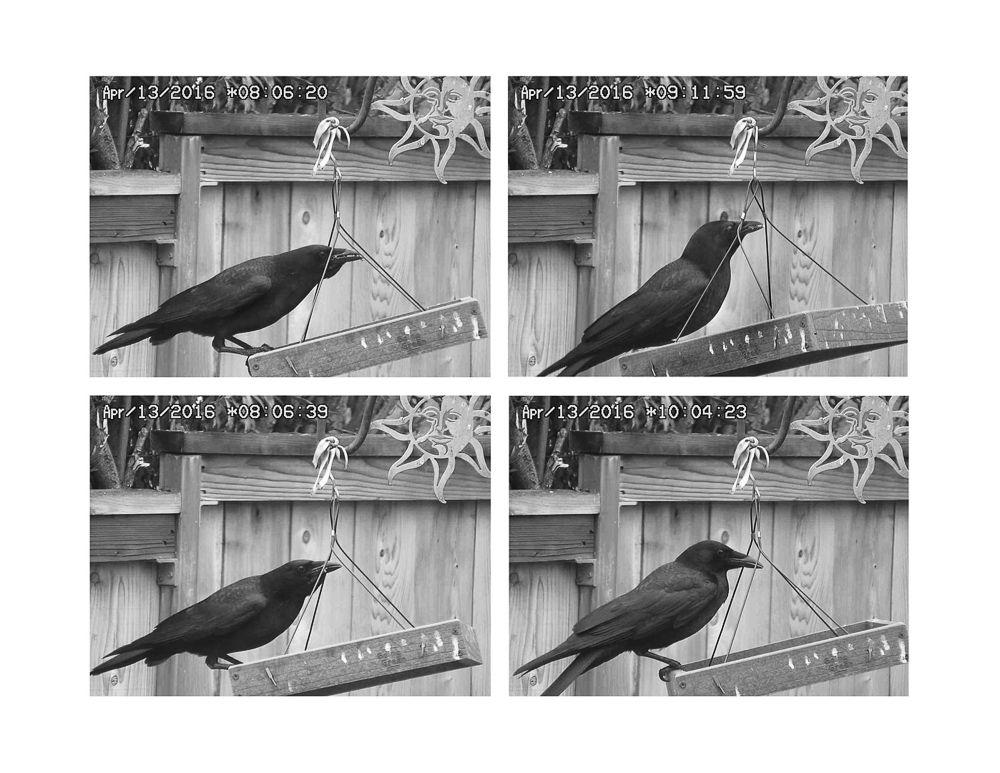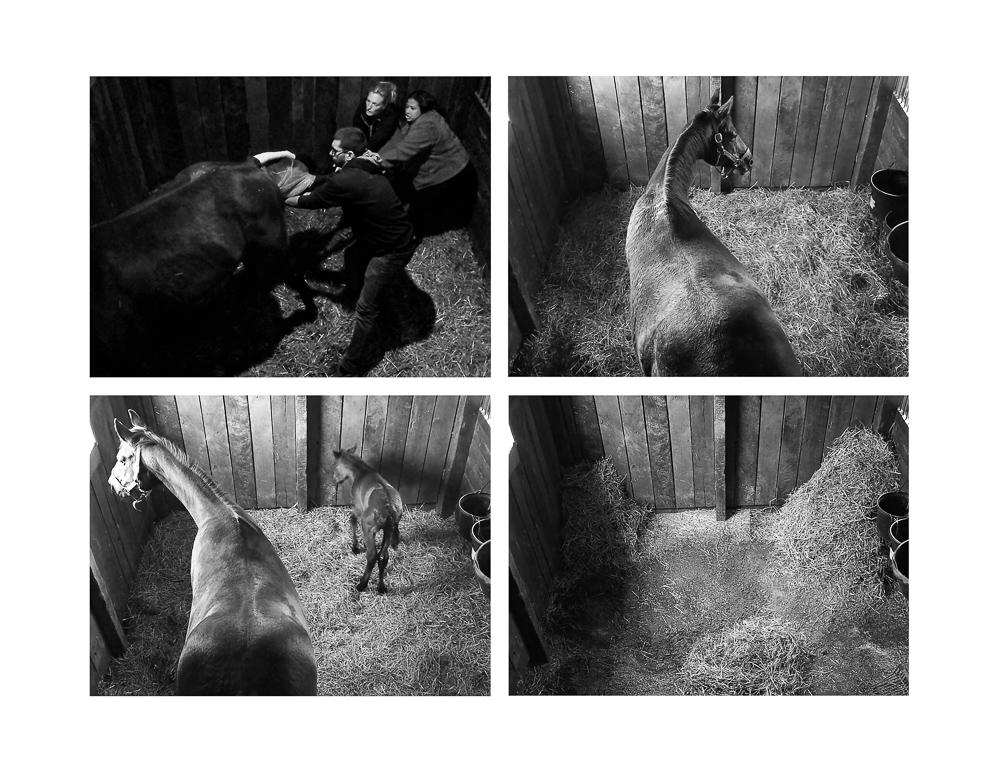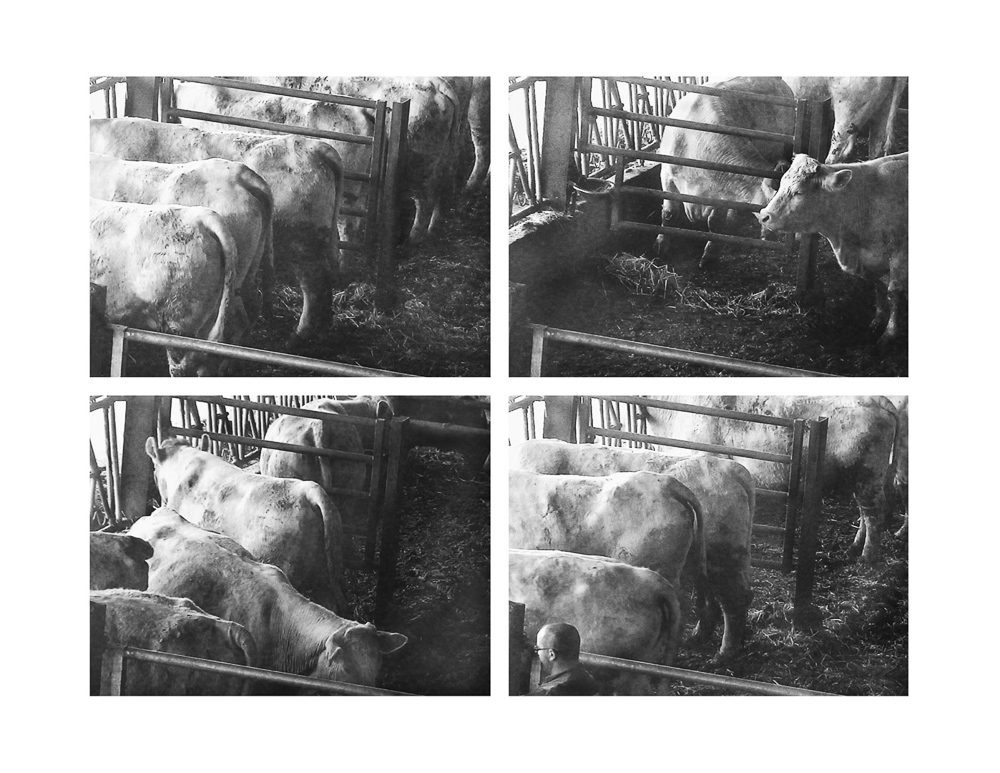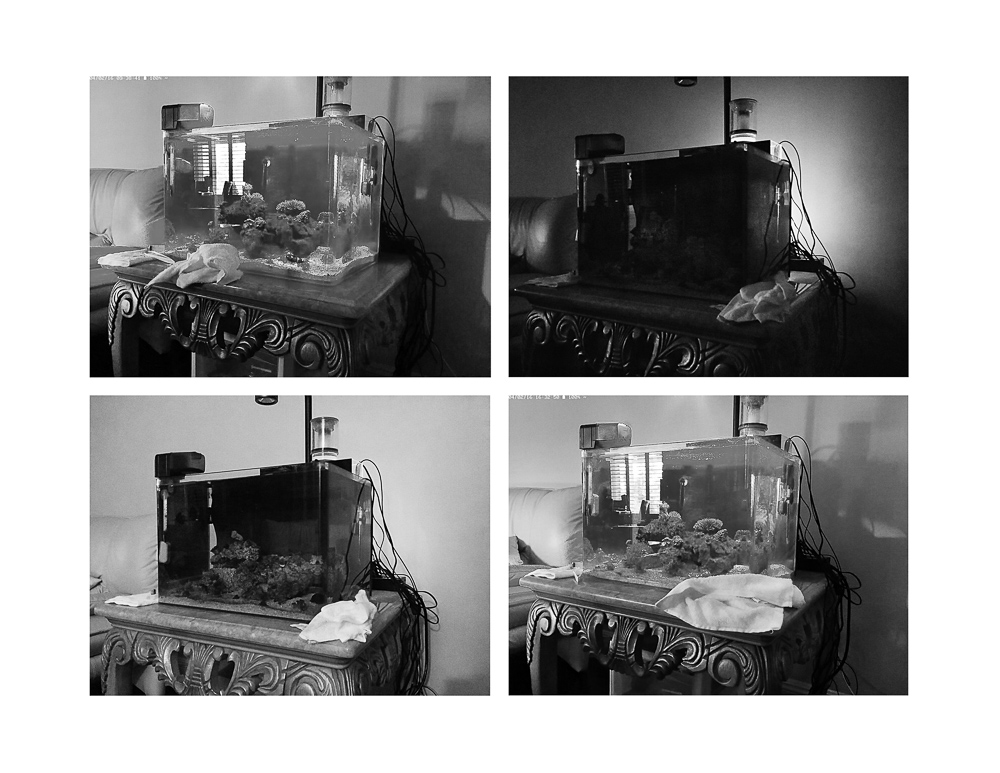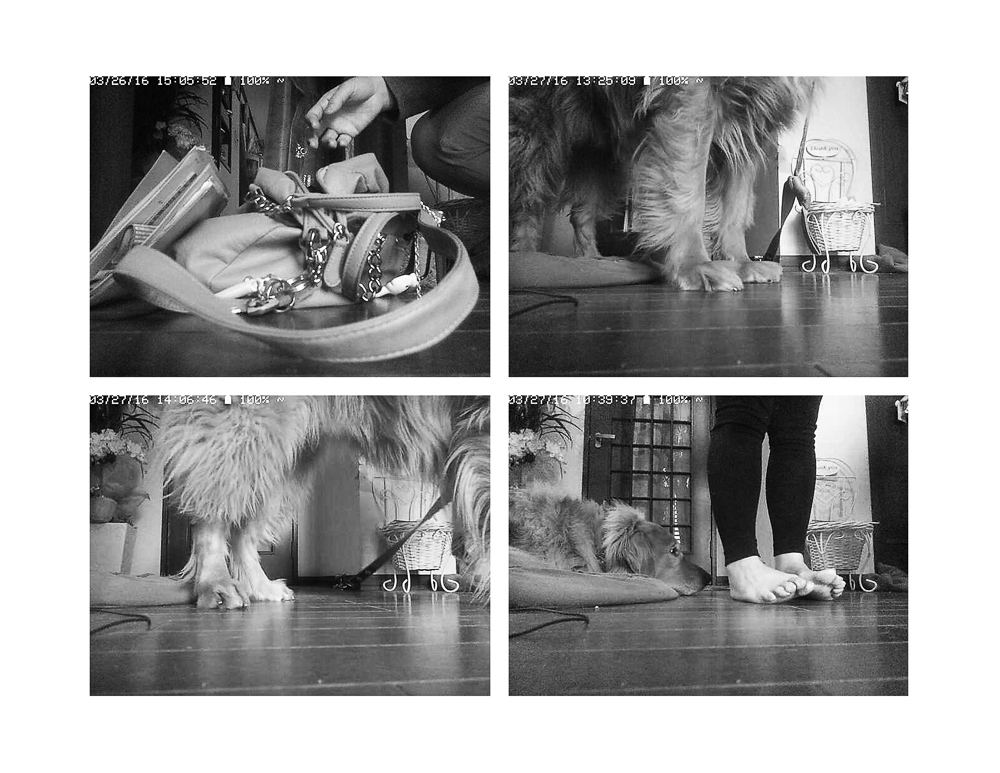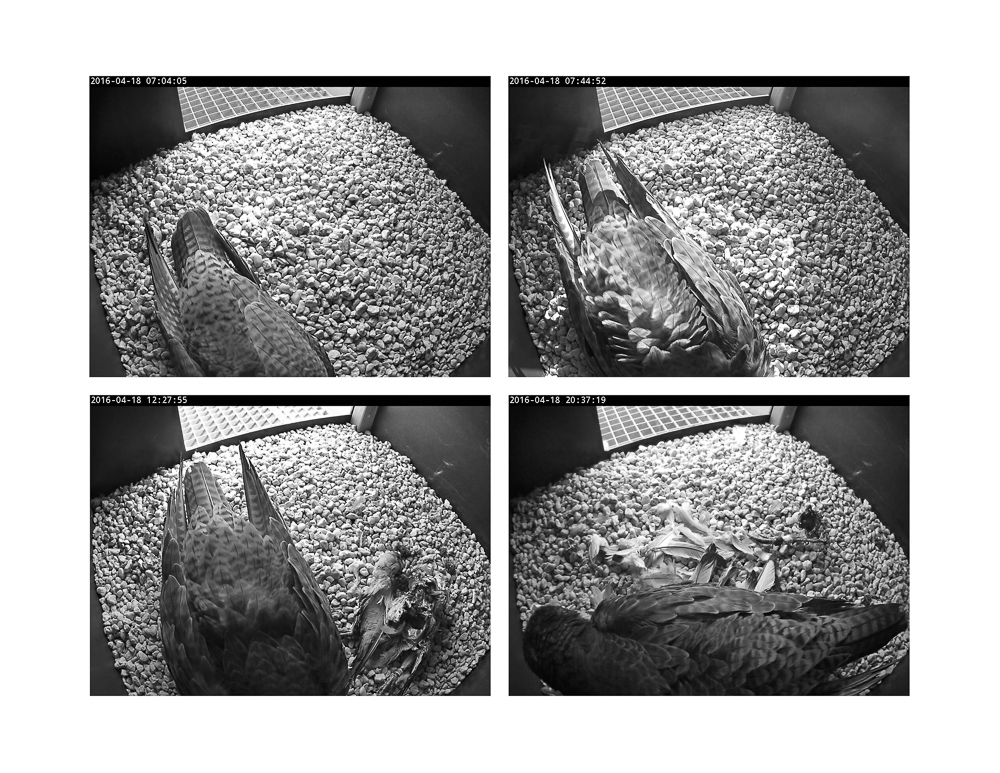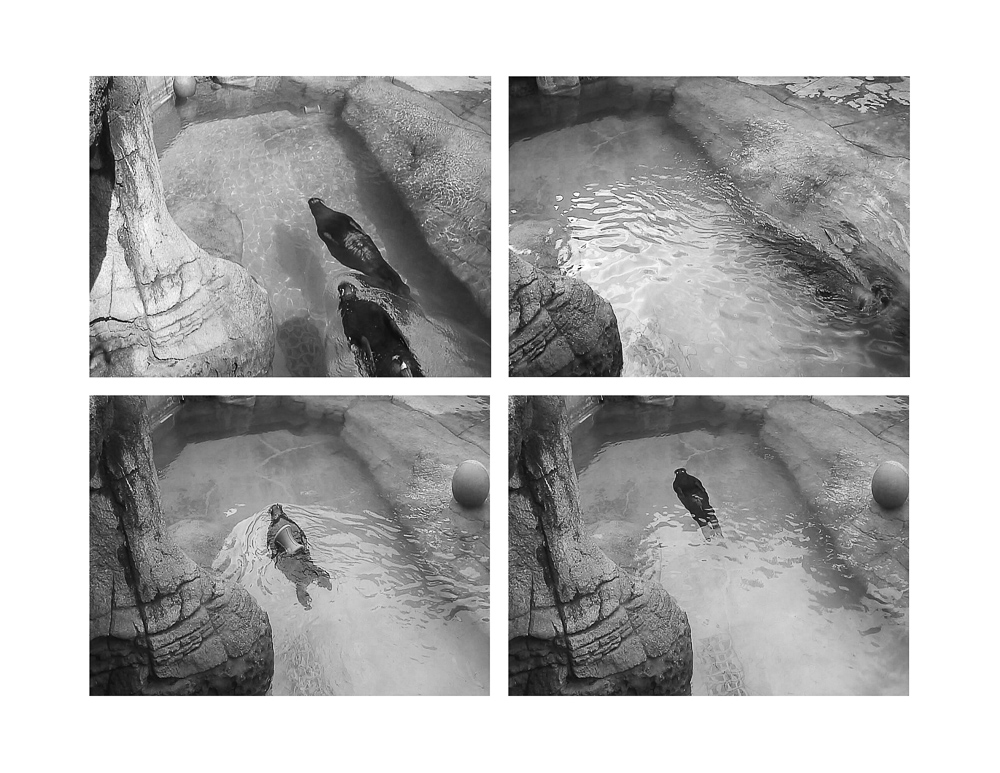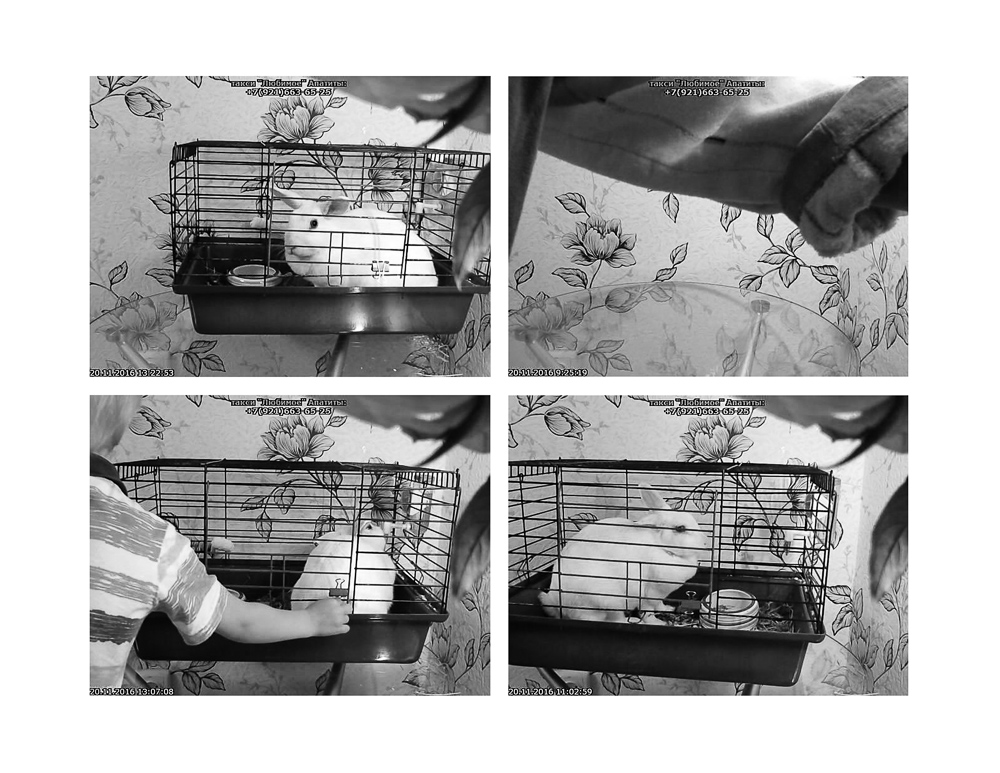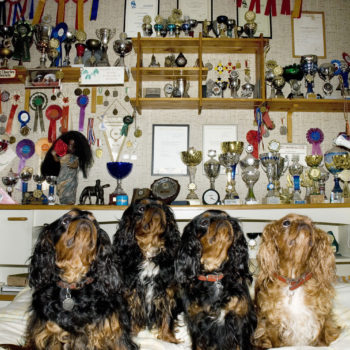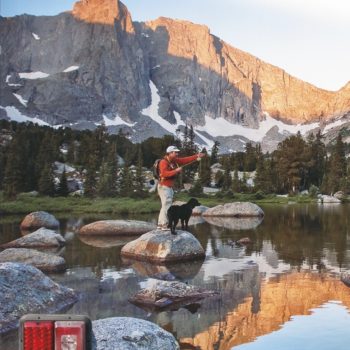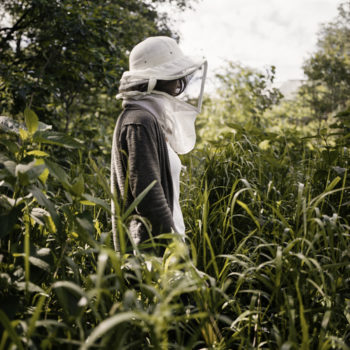Art that uses publicly viewable webcams (a la Kurt Caviezel) has always intrigued me, yet it often lacks a component necessary in sustaining my interest – animals or nature subject matter. In his series Oversight/Rendered, Joseph Moore engages with web-based cameras to create pictures unlike anything I’ve seen before. Moore’s photographs, depicting a variety of places in the world where animals can be seen and experienced, combine the animal’s relationship to the physical makings of photography equipment, the notion of capturing movement the way Muybridge first did as one of the earliest makers of photographs, and a viewer’s unconscious need to form a narrative to create images that will have you looking for far longer than you might have intended. I have also spent a lot of time with Moore’s statement, which I have read at least a dozen times and continue to glean new information from each time.
From the artist’s statement: “Oversight/Rendered” is a series of prints that begin as digital images taken from unsecured web cameras that feature the lives of non-human animals. These captured digital images are then converted into a negative and printed using traditional darkroom technique on silver gelatin paper. Through this work I wish to foreground the non-human animal and its historical relationship to photography, (pre)-cinema, and certain methods of social control in development since the 19th century.
Both human and non-human activity is instrumentalized in the production of value. These prints engage with “animal” labor on both indexical and iconic levels. The gelatin coating is made from the bodies of rendered animals: from bone, tendon, and offal. As a material that actively influences the sensitivity of silver halides, gelatin is “dead” at the same time that it actively “works” to create an image. This “work,” both represented as an image and as a material substance, recalls a living being, creating a dialectical tension between life and death. This tension in photography is often remarked upon, but rarely with regard to non-human finitude.
The image of the animal within the history of pre-cinema and early photography is common; we find it in Eadweard Muybridge’s horses, Étinne-Jules Marey’s birds, and Anna Atkins’ algae. In the work of Muybridge and especially Marey, photographic devices are produced to dissect continuous time into discrete moments, i.e. the frame. And with the series of frames taken at regular intervals, new methods for analyzing and graphing movement through images are born. Marey would use these methods of analysis to study birds in flight as well as in the service of the French army to increase their efficiency of movement. Later, the industrial engineers Frank and Lillian Gilbreth would employ similar techniques to analyze a worker’s movements on the production line in order to create a more scientifically managed workforce. Though its use of web-based imagery and traditional printing, “Oversight/Rendered” points to the historical overlap between contemporary image-based technology — CCTV, image tracking, biometrics, etc. — and these techniques’ historical precedents. Under this analytic, the labor of the cashier, the gestures of a pedestrian, and the life of the non-human exist to be recorded, graphed, and examined. The banal and the transcendent are distilled into a set of points in time. It is the life-world subjected to the efficiency of a slaughterhouse.
Each print in “Oversight/Rendered” consists of four images downloaded from the same camera feed during a 24-hour period. While certain aspects of the work seek to create historical continuity, others attempt to disrupt any easy narrativization. This anti-narrative aspect can be seen in the non-chronological placing of the four images. Formal devices such as repetition, rhythm, etc. within the quadrant pull the viewer away from the pictoral and into the material surface. I wish to generate a kind of suspension where coherent narrative is subdued, but a relationship between the parts is maintained. Although “Oversight/Rendered” relies on the fragmenting of continuous time into the discreet in a way that echoes the historical examples above, unlike them, it undermines the ordering and control that accompany a kind of “settled” narrative.
From “Oversight/Rendered”
Visit artist's site: joseph-moore.com
Posted March 8th, 2017

